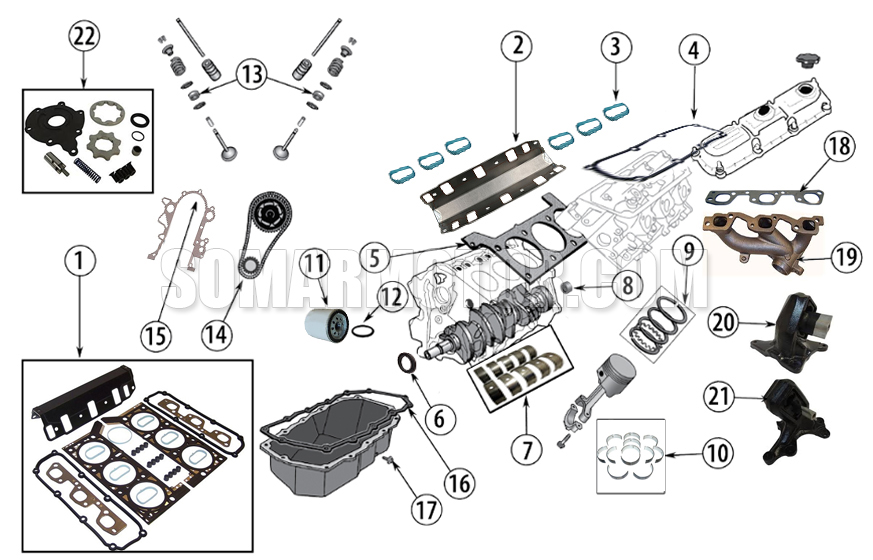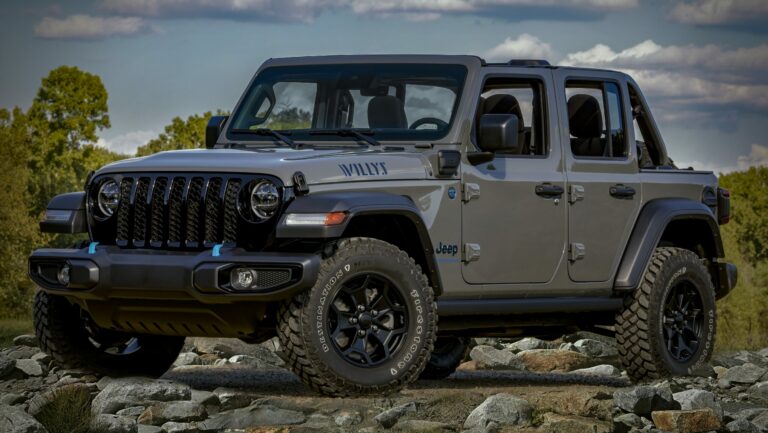2007 Jeep Wrangler Motor For Sale: Your Comprehensive Guide to Engine Replacement
2007 Jeep Wrangler Motor For Sale: Your Comprehensive Guide to Engine Replacement jeeps.truckstrend.com
The 2007 Jeep Wrangler, the first model year of the iconic JK generation, holds a special place in the hearts of off-road enthusiasts and daily drivers alike. Known for its rugged capability and distinctive style, the 2007 model, like any vehicle, can eventually require significant mechanical attention, with engine replacement being one of the most substantial. If you’re a proud owner facing a failing motor, or perhaps an intrepid mechanic looking for a project, navigating the world of "2007 Jeep Wrangler Motor For Sale" can be a complex but ultimately rewarding endeavor. This comprehensive guide aims to demystify the process, offering insights, advice, and practical information to help you make an informed decision.
Why a Replacement Motor? Common Reasons for Needing a 2007 Jeep Wrangler Engine
2007 Jeep Wrangler Motor For Sale: Your Comprehensive Guide to Engine Replacement
Before diving into the "how-to" of finding a motor, it’s helpful to understand why someone might be searching for a 2007 Jeep Wrangler engine in the first place. The 2007 JK Wrangler was equipped with Chrysler’s 3.8-liter EGH V6 engine, a powerplant that, while generally reliable, had a few well-documented characteristics and potential issues that can lead to its eventual demise:
- Excessive Oil Consumption: This is perhaps the most common complaint. Over time, piston ring wear or valve guide issues can lead to the engine burning significant amounts of oil, requiring frequent top-offs and eventually leading to lubrication starvation if neglected.
- Head Gasket Failure/Cylinder Head Issues: While not as prevalent as oil consumption, some 3.8L engines experienced head gasket failures or issues with the cylinder heads themselves, leading to coolant leaks, overheating, or intermixing of fluids.
- Overheating: Prolonged overheating, often due to radiator issues, thermostat failure, or a failing water pump, can warp cylinder heads, crack engine blocks, or damage internal components beyond repair.
- High Mileage Wear and Tear: Like any engine, after hundreds of thousands of miles, components like bearings, rings, and valve train parts simply wear out, leading to reduced compression, excessive noise, or complete failure.
- Lack of Maintenance: Skipping oil changes, ignoring warning lights, or neglecting coolant flushes can drastically shorten an engine’s lifespan.
- Accident Damage: In severe collisions, an engine can sustain irreparable physical damage, necessitating a full replacement.
- Hydro-Locking: For a Jeep, especially one used off-road, driving through deep water can lead to water entering the engine’s cylinders, causing catastrophic damage if the engine attempts to compress an incompressible fluid.
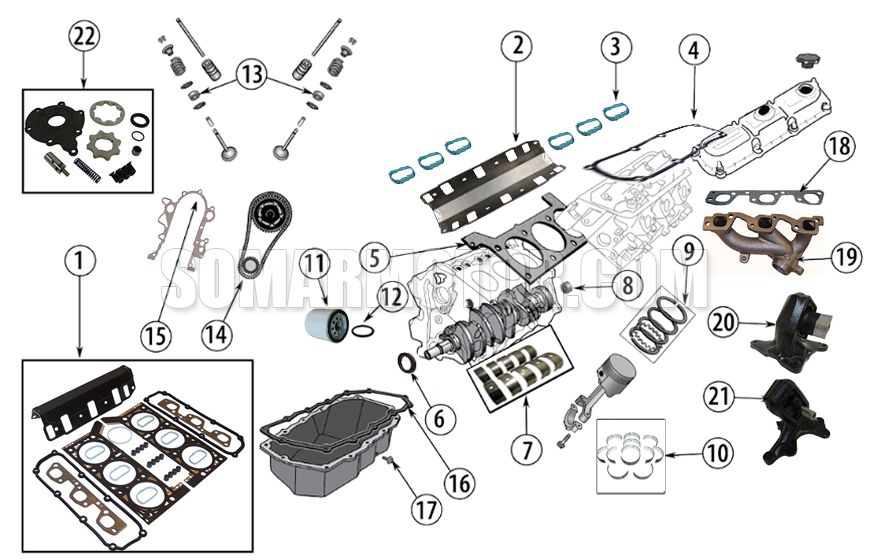
Understanding these common failure modes can help you assess the value and potential longevity of a replacement engine, especially if considering a used unit.
Understanding the 2007 Jeep Wrangler Engine: The 3.8L V6
The heart of the 2007 Jeep Wrangler is the 3.8-liter (231 cu in) EGH V6 engine. This pushrod, 12-valve engine was rated for 202 horsepower at 5,000 rpm and 237 lb-ft of torque at 4,000 rpm. It was paired with either a 6-speed manual transmission (NSG370) or a 4-speed automatic (42RLE).
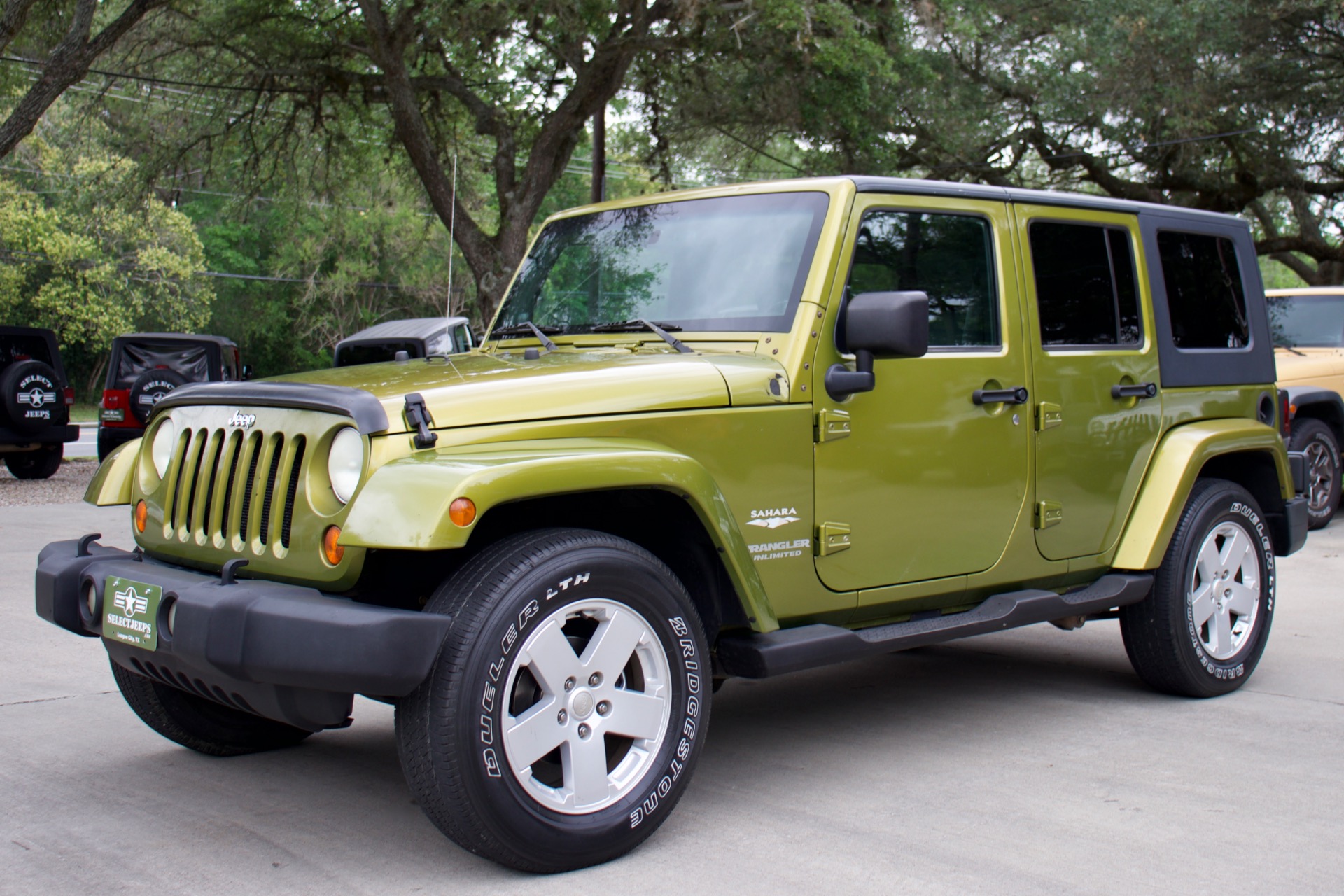
While it provided adequate power for daily driving and light off-roading, many enthusiasts found it somewhat underpowered for the Wrangler’s weight, especially when equipped with larger tires or heavy aftermarket accessories. Its simplicity, however, often meant it was easier and less expensive to maintain or repair than more complex DOHC engines. When searching for a replacement, ensuring you’re getting the correct 3.8L V6 is paramount, though typically, there were no significant variations within the 2007 model year that would cause major compatibility issues for a direct swap.
Types of 2007 Jeep Wrangler Motors For Sale
When looking for a replacement engine, you’ll generally encounter a few main categories, each with its own pros and cons:
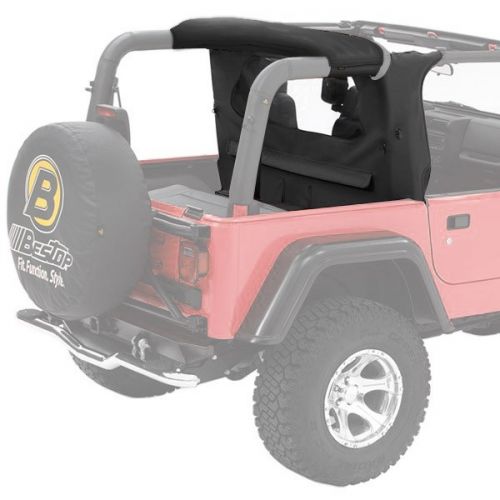
Used Engines (Salvage/Junk Yard):
- Pros: Most affordable option. Readily available from wrecked vehicles.
- Cons: Unknown history (mileage, maintenance, reason for vehicle’s demise). No warranty or very limited warranty. Risk of hidden damage or impending failure. May require extensive cleaning or replacement of external components.
- Best For: Budget-conscious buyers willing to take a risk, or those with the expertise to thoroughly inspect and test an engine before installation.
-
Remanufactured/Rebuilt Engines:
- Pros: Engine has been disassembled, inspected, cleaned, and critical components (pistons, rings, bearings, gaskets, seals, often cylinder heads) are replaced or machined to new specifications. Comes with a warranty (often 1-3 years/unlimited miles). Offers better reliability and longevity than a used engine.
- Cons: More expensive than a used engine. Requires core return (your old engine).
- Best For: Those seeking a balance of cost-effectiveness and reliability, desiring peace of mind with a warranty. This is often the most recommended option.
-
New Crate Engines (Rare for 2007 3.8L):
- Pros: Brand new, zero miles, full factory warranty. Highest reliability.
- Cons: Extremely expensive, and a truly new 3.8L V6 for a 2007 model is very unlikely to be found from a dealership or direct from Chrysler/Mopar. Most "new" options are effectively remanufactured to OEM standards.
- Best For: Those with an unlimited budget who want the absolute best, or if a specific, rare Mopar crate engine option exists (unlikely for this specific application).
Where to Find a 2007 Jeep Wrangler Motor For Sale
Your search for a replacement engine will likely lead you to several common sources:
- Online Marketplaces: Websites like eBay, Craigslist, and Facebook Marketplace often have listings from private sellers, salvage yards, and smaller parts dealers. Be cautious and verify sellers.
- Dedicated Auto Parts Websites: Large online retailers specializing in used, remanufactured, or new auto parts (e.g., Car-Part.com, LKQ Online, Jasper Engines, ATK Engines, Powertrain Products). These often have search filters for specific years, makes, and models, and many offer warranties and shipping.
- Local Salvage Yards/Auto Recyclers: Physically visiting a local yard allows you to inspect the engine (if still in the donor vehicle) and sometimes negotiate prices.
- Specialized Engine Remanufacturers: Companies like Jasper, ATK, or others focus solely on rebuilding engines. They offer high-quality remanufactured units with comprehensive warranties.
- Dealerships: While less likely to sell used engines, a Mopar dealership might be able to source a remanufactured engine from Chrysler, though it will likely be the most expensive option.
Key Considerations Before Buying a 2007 Jeep Wrangler Motor
Purchasing an engine is a significant investment. Here are crucial factors to consider:
- Compatibility: Ensure the engine is specifically for a 2007 Jeep Wrangler with the 3.8L V6. While the 3.8L was used in other Chrysler/Dodge vehicles, there can be subtle differences in accessories, mounts, or wiring that make a direct swap problematic.
- Mileage (for Used Engines): Lower mileage is generally better, but always ask for proof (e.g., VIN of donor vehicle, odometer reading).
- Warranty: This is paramount, especially for remanufactured engines. Understand what the warranty covers (parts, labor, duration) and what voids it. For used engines, a short "start-up" warranty (e.g., 30-90 days) is common.
- Included Accessories: Does the engine come "long block" (bare engine), "turnkey" (with accessories like alternator, A/C compressor, power steering pump), or "dressed" (with intake, exhaust manifolds, etc.)? This significantly impacts the price and what you’ll need to transfer from your old engine.
- Shipping Costs: Engines are heavy! Shipping can add hundreds of dollars to the total cost, especially for long distances. Clarify shipping methods, insurance, and estimated delivery times.
- Core Charge: For remanufactured engines, there’s typically a "core charge" that you pay upfront and get back when you return your old engine (the "core"). Ensure your old engine is returnable (e.g., not cracked block) to avoid forfeiting this charge.
- Seller Reputation: Check reviews, ask for references, and ensure the seller is reputable, especially for online purchases.
- Inspection (for Used Engines): If possible, visually inspect the engine for cracks, damage, missing parts, or signs of sludge. Ask for a compression test or leak-down test results if available.
Practical Advice and Actionable Insights
- Budget Wisely: Beyond the engine cost, factor in shipping, potential core charges, and installation labor (if not DIY). Don’t forget new fluids, filters, spark plugs, and possibly new engine mounts, hoses, or belts.
- Get It in Writing: Any warranty, return policy, or agreement should be clearly stated in writing.
- Take Photos: Document the engine’s condition upon arrival, especially before installation, in case of shipping damage or disputes.
- Professional Installation: Unless you have significant automotive experience and the right tools (engine hoist, stand, etc.), professional installation is highly recommended. Engine swaps are complex and require precision.
- Consider Upgrades: While you’re swapping the engine, it’s an ideal time to replace wear items like the water pump, thermostat, spark plugs, coil packs, and possibly the catalytic converters if they’re old or failing.
Pricing for 2007 Jeep Wrangler 3.8L V6 Motors
Engine prices fluctuate based on type, condition, mileage, and supplier. The table below provides estimated ranges. Always get a specific quote.
| Engine Type | Estimated Price Range (USD) | Key Considerations |
|---|---|---|
| Used Engine | $800 – $2,500 | Varies wildly by mileage, condition, and included accessories. No/limited warranty. |
| Remanufactured/Rebuilt | $2,500 – $4,500 | Includes warranty (1-3 years common), requires core return. Often includes new/machined components. |
| "New" Crate Engine | $4,000 – $6,000+ | Very rare for genuine new; typically high-end remanufactured to OEM specs. Premium price. |
| Installation Labor | $1,000 – $2,500+ | Highly dependent on shop rates, complexity, and additional parts needed. |
| Total Estimated Cost | $2,800 – $9,000+ | Engine cost + shipping + core charge + installation + fluids/misc. parts. |
Note: These are estimates. Prices can vary significantly based on market demand, location, and the specific supplier.
Frequently Asked Questions (FAQ)
Q1: What’s the average lifespan of a 2007 Jeep Wrangler 3.8L V6 engine?
A1: With proper maintenance, many 3.8L engines can last 150,000 to 200,000 miles or more. However, factors like excessive oil consumption or neglect can significantly shorten this lifespan.
Q2: Can I install a 2007 Jeep Wrangler engine myself?
A2: An engine swap is a complex job requiring specialized tools (engine hoist, stand), mechanical knowledge, and experience. If you’re not an experienced mechanic, it’s strongly recommended to have a professional perform the installation.
Q3: What’s the main difference between a used and a remanufactured engine?
A3: A used engine is pulled directly from another vehicle and sold as-is, with unknown internal wear. A remanufactured engine has been fully disassembled, cleaned, inspected, and rebuilt with new or re-machined components to meet or exceed original factory specifications, typically coming with a warranty.
Q4: What should I look for when buying a used 2007 Jeep Wrangler engine?
A4: Ask for the donor vehicle’s VIN and mileage. Look for signs of sludge under the oil cap, excessive rust, or physical damage. If possible, perform a compression test or leak-down test. Inquire about a warranty, even if it’s just a short start-up warranty.
Q5: Are there common issues with the 2007 3.8L engine that I should be aware of?
A5: Yes, the most common issues are excessive oil consumption and, less frequently, head gasket or cylinder head problems. Be prepared to monitor oil levels regularly, even with a replacement engine.
Q6: Does a replacement engine come with a warranty?
A6: Remanufactured engines almost always come with a warranty (e.g., 1-3 years/unlimited miles). Used engines typically have very limited or no warranty, maybe a 30-90 day "start-up" warranty.
Q7: What other parts might I need to replace when swapping the engine?
A7: It’s highly recommended to replace the water pump, thermostat, spark plugs, PCV valve, all fluids (oil, coolant), and possibly the serpentine belt and engine mounts. Inspect hoses and vacuum lines for cracks and replace as needed.
Conclusion
Finding a "2007 Jeep Wrangler Motor For Sale" is more than just a transaction; it’s a critical decision that will dictate the future reliability and performance of your beloved Jeep. By understanding the different types of engines available, knowing where to look, and diligently considering all the crucial factors from cost to warranty, you can confidently navigate the market. Whether you opt for a budget-friendly used engine or invest in a reliable remanufactured unit, a well-chosen replacement engine can breathe new life into your 2007 Wrangler, ensuring it continues to conquer trails and turn heads for years to come. Remember, thorough research and a cautious approach are your best allies in this significant automotive undertaking.

